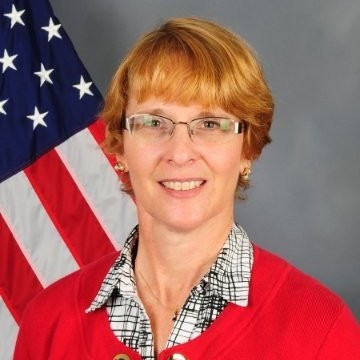SOCOM cuts years out of some SBIR phase 3 awards
Lisa Sanders, the director of science and technology for SOCOM, said Congress gave them authority to test out new approaches to SBIR agreements.
The U.S. Special Forces Command’s small business innovation research program is unique compared to other similar efforts around government.
Congress gave SOCOM a special authority in 2021 to do business-to-business transitions through the SOFWERX organization.
Lisa Sanders, the director of science and technology for Special Operations Forces in the Acquisition, Technology and Logistics office for the Special Operations Command in the Defense Department, said the command is cutting down the time it takes to field capabilities by years.

“In fiscal 2023, our average time to production decision from the initial topic announcement to the award of a follow on in phase 3 is 18 months, which is compared to SOCOM’s average before using this authority was five years,” Sanders said in an interview with Federal News Network. “We also transition about 50% of the projects that we do under this authority into phase three. Our program is structured in such a way that the program offices who are the transition partner are the ones that identify the topic, the ones that select the vendor, and they are the ones that do the SBIR contract management. There’s a built-in transition pathway, which is part of the reason that we have such a high transition rate.”
In the 2020 defense authorization bill, Congress gave SOCOM the ability to use partner intermediary agreement in conjunction with other transaction agreements (OTAs).
The Strategic Institute for Innovation in Government Contracting said “the primary focus of a PIA is to facilitate collaboration between small businesses, academia and the federal government for their mutual benefit. That can include a PI’s outreach activities for surveying all potential sources of technology of interest to a government agency. If needed for assisting in screening and evaluation, the PI can hire or contract with subject matter experts on a rapid basis to gain the expertise needed to assess state of the art proposals.”
Sanders said SOCOM used this authority in 2023 for about $2.4 million in SBIR awards using its own funding and then another $16 million on more traditional approaches for SBIR awards.
Then, SOCOM received another $50 million in SBIR awards using funding from other Defense Department components.
Software development is a good fit
Sanders said SOCOM made 27 different contract awards against 14 SBIR that ranged from things like undersea technology, diver equipment, vehicular technologies like tires or communication systems, and a lot of software.
“Software is an area that is very conducive for rapid assessment, and it’s a huge challenge when you’re trying to do traditional contract awards because those businesses that do software development oftentimes their cycle times can’t wait 15-18 months to get a decision on whether they’re going to go forward. They need to decide within a short single digit month timeline,” she said. “We are doing things in cybersecurity. We are doing things on satellite payloads. One of the things, if you see something coming out of Special Operations Command, it has to be unique to our user. If a service is already delivering that, I’m not going to buy the same truck that the Army is going to buy. I may modify that truck with unique payloads or unique environmental conditions they may need to let them operate, for instance, on a different kind of fuel or something like that. That might be a SOF-specific requirement that would go against there.”
She added one of the biggest lessons from using this PIA authority is how beneficial it is for software acquisition because the users and developers are asking critical questions at the same time, which are leading to faster decisions and accelerating the time to put capabilities in the field.
SOCOM struggled at first with the new authority, but Sanders said over the last year or two, they have settled in to attracting non-traditional vendors, advertising SBIR opportunities through traditional approaches like the SAM.gov platform and its website, and determining when it makes sense to use this authority and when it makes sense to use the traditional SBIR or even contracting pathways.
“What we are seeing is you’re contracting the cycle. The same conversations that you have, whether it’s with SBIR or any other development effort to meet a Department of Defense need you still have those questions. What’s the problem you’re trying to solve? Does this approach solve that problem? Where does that fit in the prioritization of where we’re going to execute dollars against it? Who’s going to be the transition partner to place that acquisition strategy? Is there a requirement in place? All those decisions are still the same decisions,” she said. “But because we are bringing together the user, the program manager, the technology provider and the finance people in that conversation and throughout the process, we’re having those discussions. If something is not going to pan out because the requirements changed, we don’t wait until we finish the development in order to say, ‘Okay, now is the requirement still valid? Oh no, it’s not valid.’ We just spent the last two years finishing this when the requirement had changed two years ago. Those people are in that conversation, and when the requirement changes, we share that with all of the stakeholders and make the decision at that point in time.”
Traditional SBIR transition rate remains high
While SOCOM can’t use this partnership intermediary agreement approach for all SBIR programs, Sanders said they still are moving these innovations through the process faster than the average time across DoD.
She said the five-year timeline still is necessary when doing innovation things like bending metal, buying connectors, making circuit boards and some of those higher risk technology projects that are “really pushing the envelope, and so we need to de-risk some of our projects.”
SOCOM’s phase 3 transition rate is about 40% for the traditional SBIR process.
Typically it’s in phase 3 that innovative efforts fall apart, called the valley of death.
DoD has focused on improving its transition efforts over the last several years. Heidi Shyu, DoD’s undersecretary of Defense for research and engineering, said in April that there has been a 33% increase in the number of small businesses participating in the SBIR and STTR programs that have transitioned their technologies to SBIR and STTR Phase III, or commercialization phase, since 2021. Shyu said DoD also has seen a 53% increase in the number of new vendors participating in SBIR/STTR programs since 2021.
Sanders said no matter the SBIR pathway, SOCOM is looking for vendors to bring innovative ideas.
“While we have hard problems and we have very demanding users, we have very rewarding problems that people can find value in,” she said. “One of the things that we’ve done a lot of work on is sharing what those problems are. I would encourage anybody if you don’t know what we’re interested in Google the phrase doing business with SOCOM, and it will bring you to a home page that identifies some of our problem areas. It identifies a place for you to just push out a white paper, not something in a special format with 28 pages in this particular font. Just give us a little one-page slick sheet on what you’ve got, and that will come into our user community, to us and you’ll get feedback within 90 days on your idea.”
Copyright © 2024 Federal News Network. All rights reserved. This website is not intended for users located within the European Economic Area.
Jason Miller is executive editor of Federal News Network and directs news coverage on the people, policy and programs of the federal government.
Follow @jmillerWFED







